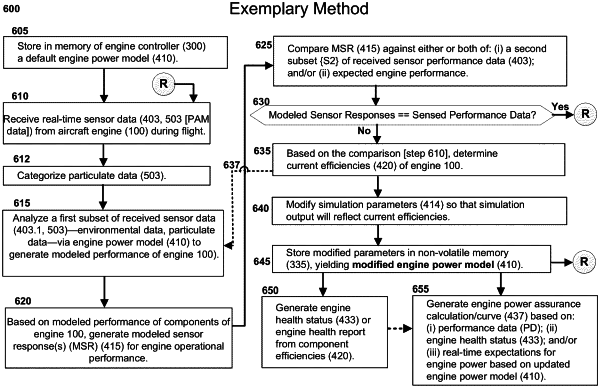| CPC F02C 9/00 (2013.01) [F02C 7/04 (2013.01); F05D 2260/80 (2013.01)] | 20 Claims |

|
13. A system, comprising:
a controller of an aircraft engine, the controller comprising a processor and a memory; and
a plurality of sensors electrically coupled to the aircraft engine, comprising:
(i) a particulate sensor configured to measure at least one of (a) particulate matter in a gas path of the aircraft engine or (b) accumulated particulate matter in the aircraft engine;
(ii) a second sensor configured to detect an operational state of the aircraft engine; and
(iii) a third sensor configured to detect an environmental state of the aircraft engine;
wherein:
the memory is configured to store an aircraft engine power model for simulating an operational state of the aircraft engine as a function of the environmental state of the aircraft engine;
the processor is configured to determine an efficiency of the aircraft engine based on (i) the aircraft engine power model, and (ii) particulate sensor data pertaining to particulate matter in a gas flow, second sensor data of the operational state of the aircraft engine, and third sensor data of the environmental state of the aircraft engine; and
the processor is further configured to extrapolate from the efficiency a maximum power of the aircraft engine under flight conditions.
|